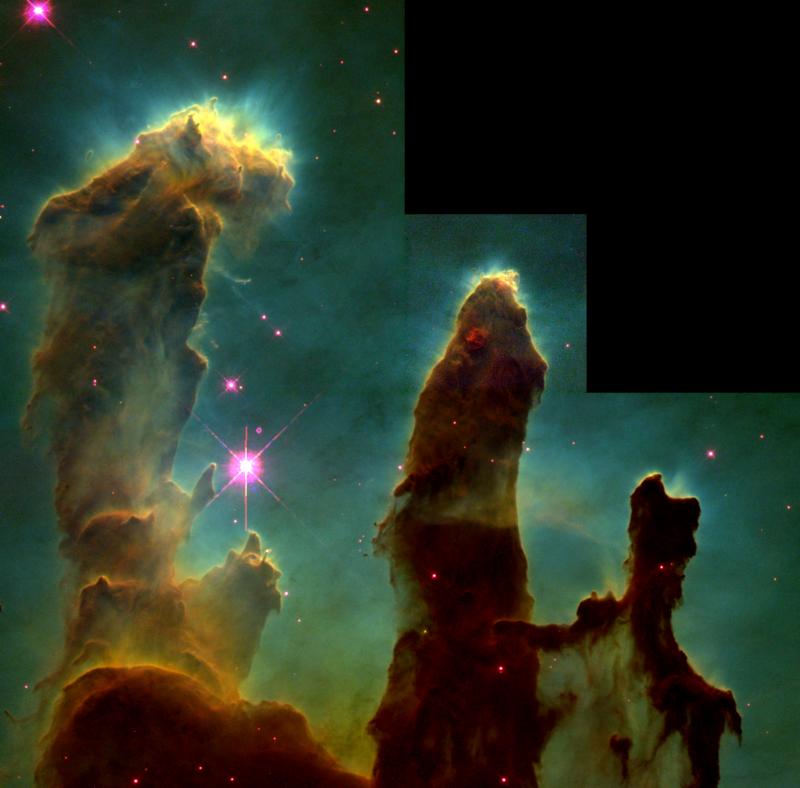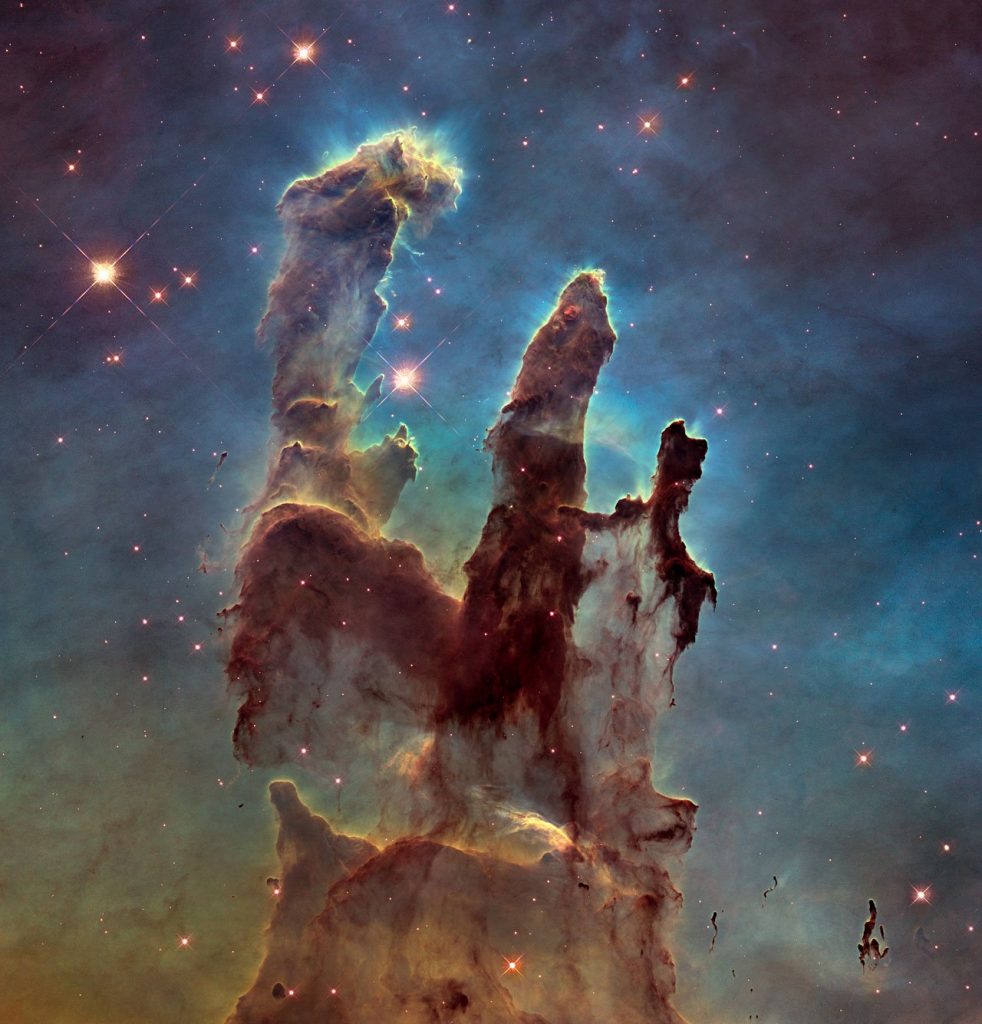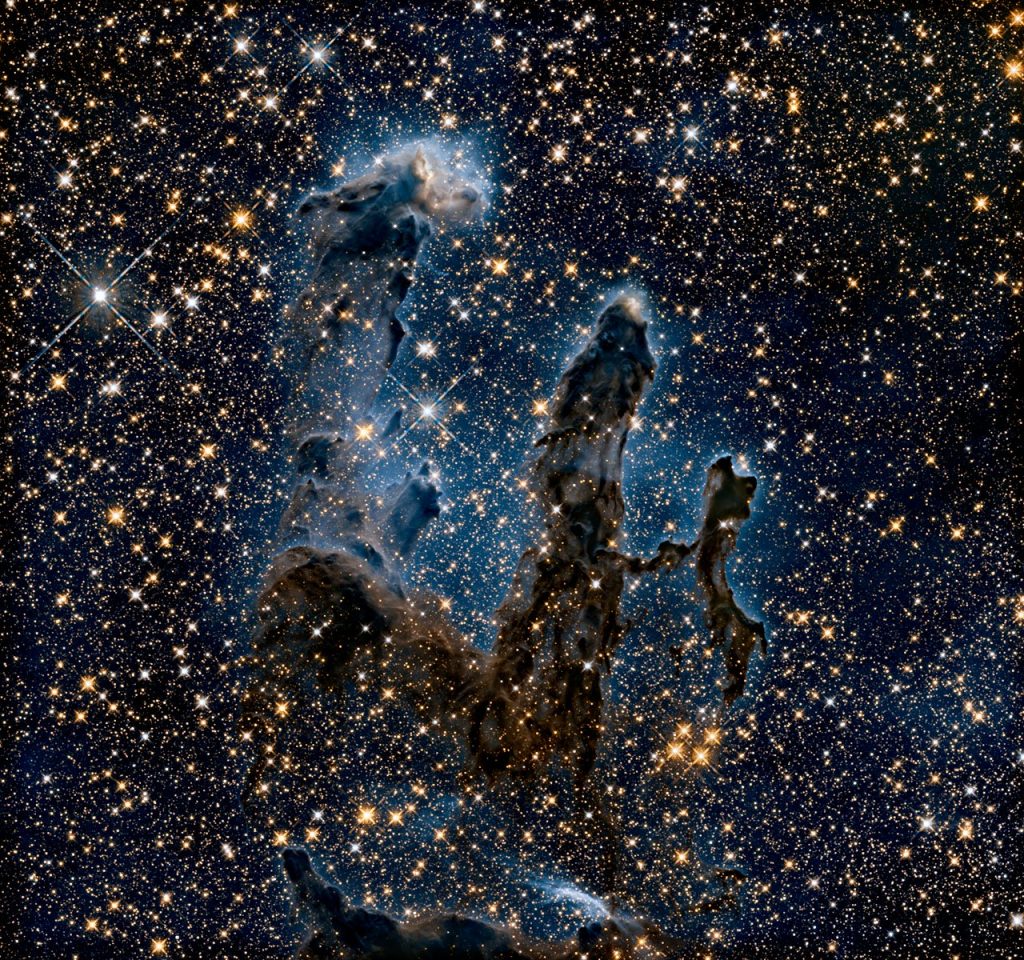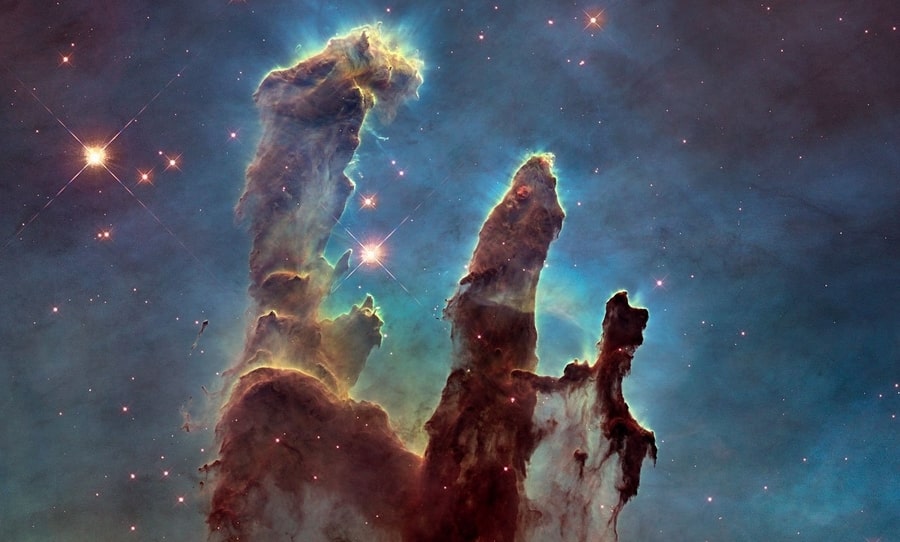Taking to their Image of the Day page, NASA recently unearthed a modern image of the Pillars of Creation – and it’s nothing short of breathtaking.
The striking columns of cosmic dust and gas have become one of the most iconic formations in our cosmos ever since they were originally captured in 1995.

NASA have unearthed some truly awe-inspiring images of the famous Pillars of Creation taken back in 2015. Check them out below.
The pillars are located at the heart of the Eagle Nebula and according to NASA, “are part of an active star-forming region within the nebula and hide newborn stars in their wispy columns.”
The original image was a composite of three different images, captured by the Hubble Space Telescope in 1995, and can be seen below. The image was captured using visible light and shows the pillars surrounded by hydrogen gas and cosmic dust.

Two modern images were then taken back in 2015, offering an even more breathtaking view of the pillars.
The first one is similarly captured in visible light, showing the multicoloured glow of gas and dust, with the blue colour representing oxygen, red showing sulfur, and green depicting nitrogen and hydrogen.
“The pillars are bathed in the scorching ultraviolet light from a cluster of young stars located just outside the frame,” NASA describes. “The winds from these stars are slowly eroding the towers of gas and dust.”

However, the second image shows the pillars through infrared light, which pierces through the dust and gas to give an entirely different vision of the pillars.
“In this ethereal view the entire frame is peppered with bright stars and baby stars are revealed being formed within the pillars themselves. The ghostly outlines of the pillars seem much more delicate, and are silhouetted against an eerie blue haze.”

The Eagle Nebula is located 7,000 light-years away from Earth in the constellation Serpens. It was first discovered by Swiss astronomer Jean-Philippe Loys de Chéseaux in 1745. The pillars themselves are a fairly small part of the nebula, stretching only about 4 or 5 light-years, with the nebula itself spanning up to 70 light-years.



